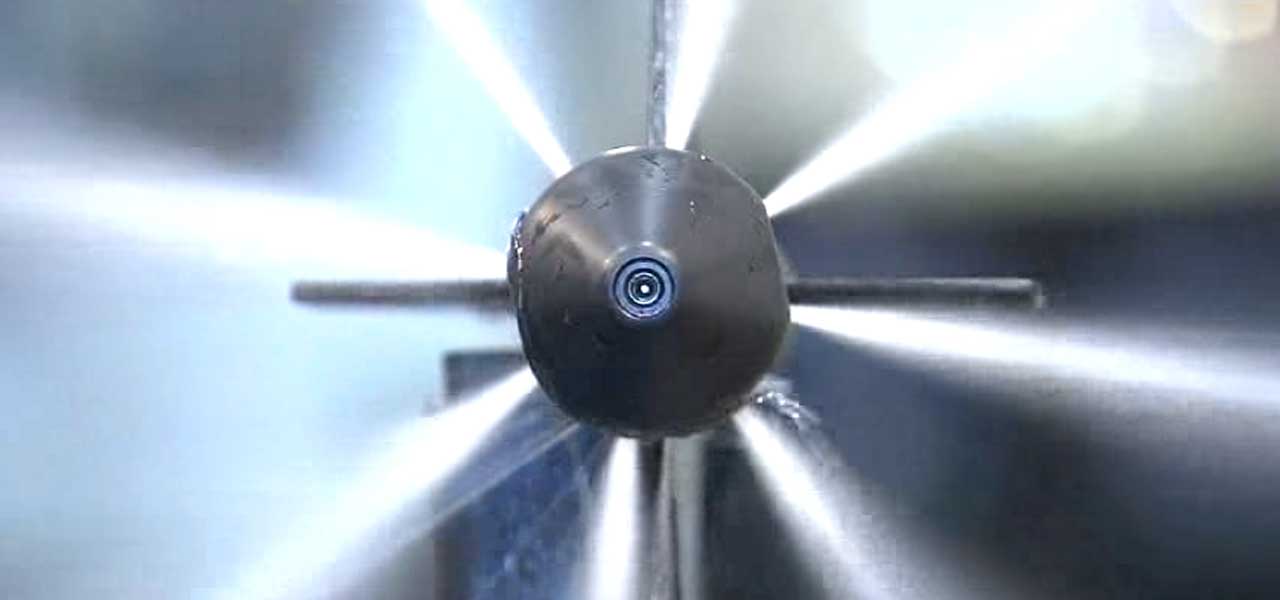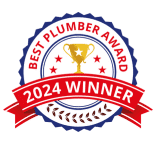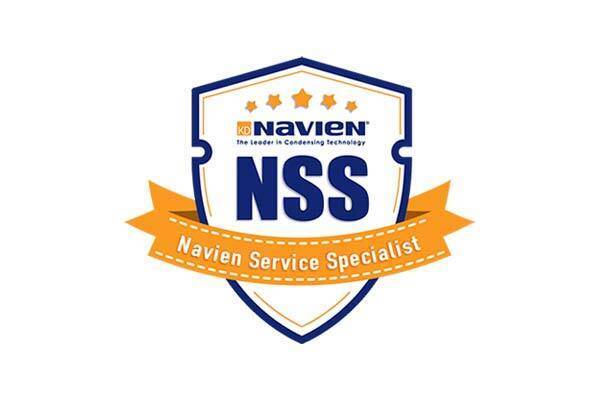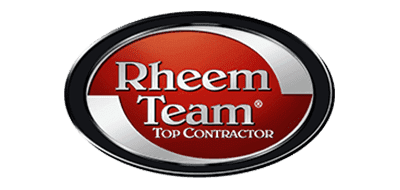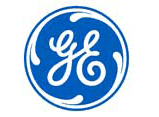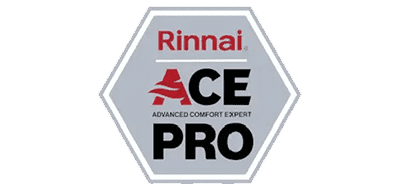Sewer Line Hydro Jetting in Houston
What is Hydro Jetting?
Hydro-jetting is a relatively recent innovation in the plumbing industry that allows a plumber to restore your home’s drain pipes and sewer lines to “like-new” condition through a thorough drain cleaning..
To complete this seemingly impossible task, the process utilizes a high-pressure water jet that will clear any blockages and remove all build-up inside your pipes. There are various sizes of water jet nozzles that are used depending on the situation, and the stream will remove and clean all traces of food waste, grease, soap build-up, even any un-flushable items that may have ended up in your sewer line or drains.
Restores Your Plumbing to “Like New” Condition
The process of hydro jetting has existed for close to eighty years, but it wasn’t an affordable option for most homes and small businesses until the last decade or two. The necessary equipment was cumbersome and required multiple skilled plumbers to handle the task.
Today’s hydro jetting equipment can be operated by a single plumbing technician who uses high-pressure water jets aimed at the walls of your pipes to dislodge and remove virtually all debris. Hydro-jetting machines reach up to five hundred feet for extended flexibility, which should be more than enough to clear your entire drain or sewer lines.
When the hydro jetting is complete, your drainpipes and sewer lines will be clear of all debris and residue, virtually restoring them into “like-new” conditions.
Why Do I Need Hydro Jetting?
There are probably as many methods for unclogging drains as there are plumbers to tell you about them. Hand operated snakes are good for clearing a clog locally, as in the case of a toilet or kitchen sink drain, but they are wholly ineffective at clearing any blockages further down the pipe then you can see.
Chemical drain cleaners will give the desired drain clearing effect in the short term but are extremely dangerous if not used exactly as specified. There is a danger of asphyxiation from the fumes of the chemicals when improperly handled, and burns from splashing chemicals can lead to permanent injuries.
Before performing the hydro jetting service, your plumbing technician should always use a video camera snake to inspect the drain and sewer lines. The reason for the video check beforehand ensures there aren’t any breaks in the pipe that could be made worse by pressure from the hydro-jet.
If the camera detects any breaks in your drain or sewer line, or worse, finds root infiltration into your pipes, you are not a candidate for hydro jetting.
What Is the Difference Between a Drain Snake and Hydro Jetting?
The main difference between a drain snake and hydro jetting is that the drain snake is simply an auger that is fed into the center of a clog. The drain snake is attached to a rotating drum that feeds the snake into the pipe and turns it to pull out the clog.
A drain snake is great for hard stoppages, as you don’t always know what is clogging a pipe. Tree roots cannot be removed by hydro jetting, where a drain snake is designed to cut and dislodge any debris that may be in your plumbing. Hydro-jetting is most effective after a preliminary video inspection to determine precisely what is in the way of your water flow.
An advantage of the hydro jetting process is the entire surface area of the inside of the pipe is cleared of build-up and debris. Even areas where standard drain snakes have a problem getting into, such as p-traps and area drains, hydro jetting is completely effective at removing debris!
How Often Do I Need Hydro Jetting Services?
If you are what we like to call a “responsible garbage disposal owner,” who tends to scrape their plates before rinsing them will likely only require this service once every five years. If you’re a little less careful about what ends up in your garbage disposal or toilets, you’ll want to have your drains cleaned once every two years.
Pressure Washing for Your Plumbing!
Anyone who has rented a pressure washer for the exterior of their home or driveway knows the deep and thorough cleaning it provides. Hydro Jetting in Houston uses the same technology, with a working range of up to 400 feet (as opposed to the 150-foot limit of a drain snake), and the power to remove even the most challenging residue!
Its pressure washing for your plumbing!!!
A Service That Lasts
If you live in a home that was built before 1970, and you have retained the original plumbing, chances are you have galvanized pipes, as they were standard for new construction up until the late 1960s. Steel in and of itself would make for an ideal plumbing material if it weren’t for that pesky “rusting” problem metal has. To circumvent the inevitable corrosion of your plumbing, the inside of these steel pipes was coated with zinc. The biggest problem with the galvanized pipe is that, eventually, that protective layer is stripped away by water and any corrosive chemicals you may put into your drains.
If your home is a more recent build or has already had your galvanized plumbing replaced, your sewer line is made of PVC plastic. Regardless of the makeup of your drain or sewer lines, hydro jetting will restore them to like-new condition and prevent all the plumbing failures that can be caused by plumbing blockages.
How Much Does Hydro Jetting Cost?
Hydro-jetting is a very cost-effective way to maintain the drain and sewer lines in and around your home. The average plumbing cost for hydro jetting service (as in “one with no surprises”) in Houston ranges from $475 to around $700.
If you’re regularly experiencing clogged kitchen and bathroom sink drains, backed up toilets or bathtubs, or all the above, Nick’s Plumbing Service offers hydro jetting service in the Houston and surrounding areas. They’ll look at your plumbing system, both from the outside and within with a video inspection, and based on what their findings will determine if hydro jetting would be effective for you.
Since 1979, Nick’s Plumbing Service has provided all facets of plumbing repair, maintenance, and installations. We are the local industry leader in the hydro jetting field, with only licensed and experienced plumbing technicians performing hydro jetting in Houston service!
Perfect for Restaurants and Other Commercial Establishments!
In commercial applications; particularly in food preparation establishments, hydro jetting should be viewed as part of a regular sewer maintenance plan. The amount of grease and other solid food waste that goes into the drains at these establishments is much more than any home would produce, so cleaning them thoroughly is a must.
Hydro-jetting in Houston will restore your pipes to their original diameter, completely removing all traces of grease, soap build-up, hair, sand, even tree roots, and is exceptionally useful in commercial applications, particularly in the food preparation industry.
Having a hydro-jetting in Houston service call once every six months in your restaurant will reduce the chances of drain pipe or sewer line clogs, or worse, a shutdown of your business due to a health code violation.
More on Hydro-Jetting in Houston on The Potty Mouth Guys Show
Nick’s Plumbing Live Video Transcription:
On today’s show, it’s all about hydrojetting in Houston, John Eccels, Richard Saad, another week, another discussion, and another discussion. That’s right. So what is hydrojetting well, why do you need it? Yeah, why would you want it? And what benefit do I get from getting that service done? Those are the questions today,
right John? Absolutely it is. I think first I need answers. First, let’s tell our audience, um, what the difference between the hydrojetting is and what a drain cable or a snake drain or drain snake. What are the differences? Because both of them do similar jobs, right? That’s right. Absolutely. So you firstly your drain cable, right?
Exactly what you said, right? That’s a cable goes on a machine, it’s got high torque, so you’re running a cable through your drain and there’s different heads that we can put onto that cable that can perform different tasks, but the one that most people use is, it’s called a root cutter and it’s Kinda like a u shape like this and it goes around the pipe and it grabs anything in that pipe and wraps it up or cuts it to where you can then pull it back out of that pipe or freed up to for free it up so it can flow through. So why would you want to use a drain cable? Well, it’s great for stoppages. Absolutely. You don’t know what stopping the pipe up, right? That’s right. But it’s not a cleaning tool. It’s an unstoppable tool. Yeah. We’re,
we’re going folks. Yeah, I mean, so you gotta kind of, you know, use your imagination a little bit, but the cable on those things or three quarter inch cable and you’re putting it down a four inch clean out the cutters only three inch, right? Yeah, you will. You can buy them up to say, okay, well I’m talking about that. We’re going to put down the four inch pipe we don’t write because it’s so it moves around in that pipe and it doesn’t necessarily get all of it, so it’ll hit a chunk missing chunk and it’ll kind of piece it’s way through that pipe. Now it does. Like you said, there’s a great job on stopping it. Sorry I got hung up there. It’ll do a great job and stopping it and moving stuff down. But what you just said was key. We’re looking for something that’s going to clean that line. And the hydro jet absolutely does that. It’s the thing that um, we’ll take our pipe to as near new condition as possible. Right? A cable assess drain snake just won’t do that. It won’t do that. It’ll chew through those stoppages and get it down the way. But these hydro jets will take that pipe to as near new condition as that pipe is possible to getting.
That’s right. All right. Where would you really need that though, John? Right? What do we need it on our four inch lines? Do we need it on r three, two, we need it on our two inches,
most commonly used right in the kitchen area is the most common that, that’s a big one. Um, believe it or not, area drains. It’s a big one. Um, and we’ll explain why that is. The kitchen drain is because of coagulation of grease. So people tend to put a lot of stuff done there. Kitchen drain that probably doesn’t go down there, but it’s okay. You know, they, they think once it exits out of the sink, it’s gone forever and you never have to worry about it. A lot of grease, lot of stuff that sticks together and it starts coagulating is it? I say that right? That’s the first of all, I set it on there, coagulate and onto the walls of the pipe and it starts, you know, bearing down and reducing that pipe and create some flow restriction, uh, to get that stuff out. I’m sorry, go ahead.
I was going to say it a little bit more in depth on that. How does it get into your pipe? Right? So here’s what you should do. You guys always scrape your plate into a Trashcan, period. That’s the safest thing that you can ever do. Try to put the least amount of down that kitchen sink. Well, you know people are going say, well, I have a garbage disposal. What’s that for? I understand you have a garbage disposal. I have one to two. You have one and I put very little down that garbage disposal. I scrape everything. Okay, so a garbage disposal you should use just the rents, get everything off of that plate, goes down into the garbage disposal and then you send it and then it sends it through the piping structure. Right. The big thing is after you scrape a plate, you wash a plate.
There is always residual on a plate, whether you can see it or not, that Greece will go down and it will only go so far and then it will get stuck in the pipe. Try it is not going all the way out to the city sewer supply most of the time. Most of the time it’s sticking in your piping structure. Yeah. So what that hydro jet will do it. It’s just like a high pressure spray. It’s a pressure washer. Think of it like that. Pressure Washer. That’s not good for the inside. Yeah, for the inside of your pipe. You know, if you’ve ever a company to come out and power wash your concrete driveway, your sidewalk or your house. Same process with the pipe. We’ve got highly sophisticated heads that pole in clean and wash that pipe all different directions. And when it comes out of there, it looks brand new. You guys, it is awesome. So when should you do that in the kitchen sink line? Let’s say that. Should we do it every 10 years, every year?
Five, what would you tell them to people? So what I would recommend, and this is coming from a guy I use my garbage disposal bunch, I’m the bad guy. Shame on you. He’s the good guy. Bad Guy. I throw everything down there. I do. Um, if my drain line backs up at all, I’m going to get the. I’m going to get the hydro jet right. And all that’s going to do is prolong the next time that I have to do because I know that I’m gonna have to do it at some point in time because you keep putting stuff if you’re, if you’re, if you’re calling in for service and you’re a typical person or it’s a house that you haven’t lived in since it was built, I would suggest getting the hydro jet 100 percent of the time. That way that you know that pipes can be taken near new condition. The cost difference isn’t extremely, you know, you know, on the spectrums. So it’s pretty, you know, it’s relative, right? So I would absolutely 100 percent of the time on a kitchen line do the hydro jet.
So here’s what I would tell people one step further. So when do you need it? Right. Okay. Well if you’re, if you’re a guy like me that doesn’t put anything down there, I scrape everything. Just a little bit of residual every five to 10 years. Yeah. I’d say do a hydro jet, get that pipe looking brand new. But if you’re John Shoving the Turkey, the chicken and everything else down there, getting, I would probably do it about every couple of years or if you have an immediate problem. That’s right. Yeah. Now commercially is a different story. Yeah. If, if you’ve got a commercial restaurant, you are going to be doing hydrojetting a lot more. Well yeah. So we’re going to show you guys some pictures of how that pipe looks and the inside of a pipe, a one, it is full of grease and it is nasty, nasty and it will pull all the grease out of that pipe. So if you’ve got a commercial business, you probably need to do hydrojetting about every six months. Why do you think that is? Great. All the grease goes down their line. Yeah. Then it goes to the grease trap.
You think you think some of it. You know, I always, always, I don’t know why I always think this, but like they have employees there, right? It’s not, their building is not there. Correct. So there’s a little bit more, um, Ms Dot Anna Lynn, I guess I would say typically don’t care what they put down the sink, you know, in their defense, they do scrape a lot in trash cans. Yeah. Oh yeah. They really do. I’ve waited tables. I. Yeah. Oh yeah. You did wait tables. So they do scrape a lot in the trash, but I think
it’s the high volume that gets them. Yeah. It’s all the time all the time. And I also think it depends on let’s take food in what produces the most grease. Yeah. Mexican food. Yeah. Yeah. Barbecue. Yeah. Those two types of restaurants are extremely hard on our plumbing systems. Now let’s take Greek food or Italian food. I mean, you’re eating salads and such. I mean, it’s not taking havoc on the pipe. Like you said, maybe Mexican food, Mexican food. It’s hard on your plumbing system. I was like a hit sometimes, but no, you’re right though. There’s lighter, lighter affairs aren’t as tough on the plumbing system. That’s right. Yeah. They’re not producing as much greases. Barbecue and Mexican food. Chinese food is pretty bad too. Know Chinese food. Let’s throw that in the group of heavy grease, so you guys, if you’re watching the show, I would highly recommend getting your lines, um, hydrojetting probably every six months and that’s going to keep a plumbing company from coming out there under emergency.
Yeah, absolutely. You know, unless something changes with your business and you start cooking other things or throwing more things down there, but it’s really going to keep us away and whether you realize it or not, if you get a stoppage, the health department walks in there, you’re instantly shut down. What is the cost factor of that? Hydrojetting is going to be much cheaper to do routine, routine maintenance versus downtime adverse then versus downtime, and they always happen at the worst times. Absolutely not going to happen even at your home, right? It never happened is when you’re having a release giving, it happens when you have family over. Someone flew in from out of town or something. That always happens at dry and so what I would do, and even as a homeowner, I would do routine maintenance. It’s very important, I think very little homeowners from a plumbing standpoint do maintenance. Oh yeah, absolutely. Maintenance. Your water heater. You should maintenance and do hydrojetting. I’m on the same frequency. That’s what I would do. Yeah. You may get your AC system. I mean these things need maintenance. Well, yeah. True investment, right? That’s right. You need to take care of it much. Ryan, you changed the oil in your car, right? No.
Yes.
Yeah. So. Hey, real quick, before we get out of here, I want to talk about the area drains real quick because that’s another thing where they were hydro jet really comes with the help because a lot of times those catch basins, right? They have ways to filter out, but a lot of times there’s some debris that gets down in there, you know, especially dirt sand leaves and that stuff will definitely stick to that pipe and not be taken to where it needs to be. So if you ever have a yard, drainer and area during this not working properly and it needs in, your thinking needs to be cleaned out. Absolutely. Go with the hydro jet because you need to pull all of that debris out in the cable. This drain snake is not going to do that for you. I don’t care. Anybody tells you
it’ll. It’ll create flow. Have you have a stoppage and then they’re absolutely backing up, but if they’re draining slow and stuff, a lot of times you got buildup up on the bottom. Absolutely. Ask for the hydro jet to pull it out. That’s right. And that applies residentially and commercially. Yeah, absolutely. We’ve got different hydro jet machines that we have that we own so we can go from the smallest piping to the largest pipe to get these things done. So we’ve got three different jet machines. You guys and they all do something a little bit different and there for different application, but we can handle all of your Jedi needs from the small piping to the large piping. You remember my saying what the cable is able, but the jetter is better. I like that. Absolutely it is. So if you need help around this thinking that you want it, if you want to discuss it further, call us. We’ll give you the information that you need to make a good decision for you. So thank you guys. Thank y’all so much.




